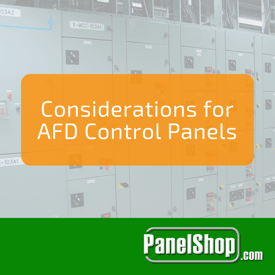 With every passing year, the world is getting increasingly energy-hungry. While the demand continues to rise, our society can no longer sustain unrestrained and inefficient use of non-renewable resources. The industrial community is following a trend of enhancing their equipment’s energy efficiency, cutting costs which can be placed elsewhere. The trend is backed by penalties during high-demand periods as well as government action. The ErP legislation in Europe demands the use of VFDs or VSDs on high efficiency class motors and Title 24 in California requires frequency control on HVAC segments. These demands have kicked off a successful chain of events for efficient use of non-renewable resources, and are reaching down to OEMs and panel builders.
With every passing year, the world is getting increasingly energy-hungry. While the demand continues to rise, our society can no longer sustain unrestrained and inefficient use of non-renewable resources. The industrial community is following a trend of enhancing their equipment’s energy efficiency, cutting costs which can be placed elsewhere. The trend is backed by penalties during high-demand periods as well as government action. The ErP legislation in Europe demands the use of VFDs or VSDs on high efficiency class motors and Title 24 in California requires frequency control on HVAC segments. These demands have kicked off a successful chain of events for efficient use of non-renewable resources, and are reaching down to OEMs and panel builders.
As the need for variable frequency becomes a required part of more industrial systems, adjustable frequency drives (AFDs) are becoming increasingly common in the market. On systems using lower power ranges, the existence of AFDs has caused significant pain, since the hardware may serve as overkill. A drive’s installation and commissioning is a long and complex process involving more than 100 parameters, that have to be followed more or less for all applications.
In most cases, users are looking for the simplicity offered by soft starters, which can control the starting and stopping of a device, but lack the ability to alter the frequency and speed of the system. Soft starters do not require advanced commissioning and are less expensive than AFDs. However, soft starters do not fit the requirements that AFDs do.
So how can a user reap the benefits of a drive while maintaining the simplicity of a soft starter? How can a manufacturer design control panels for users while meeting the stringent energy-efficiency demands?
Application Considerations
The scope of the application must be considered at all times. AFDs can be utilized in a diverse set of applications, from fan walls to conveyors to booster pumps. And each application has its own requirements. For instance, in the HVAC market segment, there are thousands of fans that follow analog inputs based on the environment and temperature. On the other hand, conveyor motors only need on/off signals, though drives are utilized to handle the additional torque on the motor.
These typical applications are burdened by long installation and complex commissioning. By using products that have default control terminal operation matching the basic application requirements, the installation time can be significantly reduced. If the application is simple, products should be used that have the required parameters set as default, thus eliminating any additional commissioning time that may come along with it.
Another product to consider is the Variable Speed Starter. These are designed without keypads, which may hinder the flexibility, but they can create a cost-effective and realistic control panel design. Several drive users prefer operators to not have access to the keypad, because it makes the system susceptible to changes, accidental or otherwise. In addition, once the control panel door is shut, the keypad is inaccessible anyway, so using a keypad-less starter can bring down the complexity and the cost of the panel.
Applications that require multiple motor control components also require upstream circuit protection for each device. For instance, five fans will require five motors, five drives, and five circuit breakers/fuses, resulting in a much larger control panel size. But a drive that has been UL tested can resolve these issues of space. Group motoring allows up to five drives to be protected by one upstream short-circuit device. Thus, group motoring can result in material and labor cost savings, as well as simplification of the panel design.
Wiring Considerations
The physical layout of the AFDs can greatly influence the wiring of the panel. There are two different line and load wires layouts that can be chosen:
- Line, load, and control wiring through the bottom of the drives
- Contactor-like wiring with line-side wiring, load-side, and bottom-side wiring at the top, bottom, and face of the drive respectively
Products like variable speed starter can eliminate the need for additional wiring and mechanical interlocks, while at the same time reducing the panel space required. Contactor-like wiring is simplified in terms of wiring diagrams and requires less commissioning time.
Commissioning Considerations
Setting up the parameters of the frequency drive requires additional time for installation. This can be reduced by using copy/paste tools, which can push settings off of one drive to the next. For instance, if an HVAC system is made up of a cooling fan and a compressor, the tools can store the parameters. These can then be used during reinstallation, reconfiguration, or troubleshooting sessions.
For basic applications, the number of parameters may be few such as motor frequency, rated current, and fixed frequency. The user can alter these by going through the parameter menu on the drive or through PC-based tools.
By identifying the application before selecting the drive, the wiring time, commissioning time, and material cost can be reduced significantly. The use of tools can result in simplification and greater manageability in the long-term, resulting in the development of effective panels.
Interested in learning more? Start a conversation with PanelShop.com, speak to an expert today!





